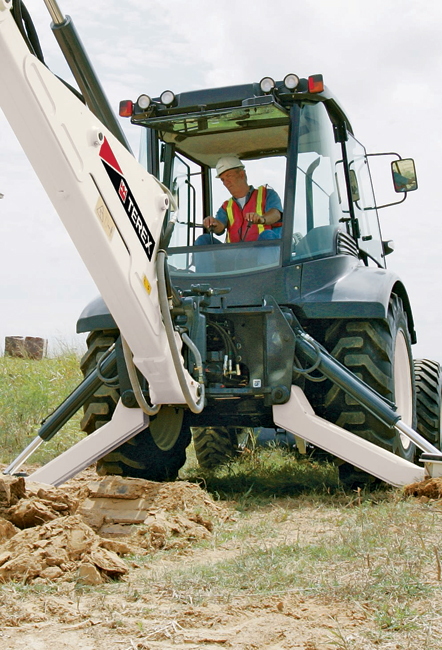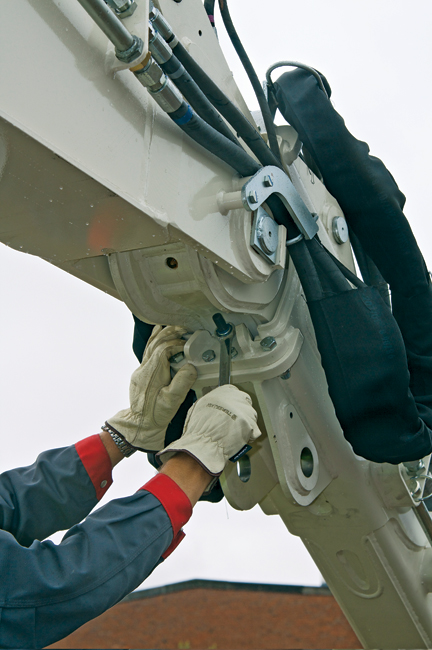Now May Be the Time to Invest in Used Equipment

Savvy contractors know that buying used equipment can be a smart way to reduce investment cost and increase profit margins (especially when all the new models prepare to hit the market). And as a result of the lingering effects of the down economy on the construction industry, there is a surplus of used equipment available. With work tough to come by, many contractors are looking to downsize their fleets in order to match reduced business, creating an opportunity for those who are in a position to buy to take advantage of some unprecedented deals.
“We’re in a unique situation right now,” says John Poag, sales operations manager for Terex Construction Americas. “The economy has taken its toll on many contractors, but for those who do have money to spend, now is the time to invest — and with the surplus of used equipment available, you’ll get a lot more for your money.”
What Used Equipment Can Do for You
Contractors can take advantage of lower equipment costs to tailor their fleet to the needs of today’s market. This might include some specialized machines that were previously unaffordable. In the long run, this means having the ability to bid on more jobs at a more competitive price.
To determine if now is the right time to invest in “new” used equipment, Poag suggests doing a simple acquisition cost vs. utilization rate analysis. Some questions to consider are: Will this piece of equipment allow you to do more specialized jobs? Will it allow you to do your current jobs more quickly and efficiently? Will having this piece of equipment allow you to do jobs that your competitors are not capable of? All of these questions will help determine if used is a better option than new.
“Equipment is what makes you money in this industry,” explains Poag, “but you can make a lot more money a lot faster if you can lower your acquisition cost on a piece of machinery that also allows you to increase your work.”

With more contractors seeing the value in purchasing used equipment, many major manufacturers are seeing the value in helping contractors make that purchase. Terex, for example, is offering retail financing options or a cash back option on all Terex and non-Terex used equipment listed on the company website: www.terex.com/used.
According to Poag, it is in the manufacturer’s best interest to provide customers with a range of equipment solutions, including both new and used. “Today’s economic conditions have created different needs for different contractors. It’s important for manufacturers to respond to these different needs, which is why Terex offers financing options on both its new and used equipment.”
Inspect Before You Buy
To reduce the risk associated with purchasing a piece of used equipment, it is important to do an inspection of the machine before making a purchase. “The degree of the inspection largely depends upon the age of the machine and the reputation of the seller,” says Poag. “An appropriate inspection of the machine should expose any potential problems or money pitfalls.”
For newer machines, a routine/basic inspection should be sufficient, including: the condition of tires, belts and hoses, looking for leaks, signs of damage or unusual wear and tear. For older machines with higher hours, oil and hydraulic fluid samples should be taken to check for any contaminants or system problems. The thoroughness of the inspection should also be adjusted based on the type of equipment and the weather and geographical conditions the machine has been exposed to. The more severe the environment, the more thorough the inspection needs to be.
Up-to-date maintenance records will also give a good indication of the condition of the equipment. Larger contractors and auction houses should have service records, but if these records are unavailable — which may be the case when purchasing from a smaller distributor — the internet is a great resource for owner’s manuals and consumer reports.
Common wear points, such as hydraulic hoses, tracks and tires and the engine should also be inspected. Scrapes and scuffs, chipping paint and rust are other red flags to look out for. “Remember, this is construction equipment,” points out Poag. “Abuse and normal wear and tear are two different things. If you do your homework before you go shopping, you’ll be better equipped to make an informed decision.”
Poag also cautions, “With used equipment you don’t get a manufacturer’s warranty, so it’s up to you to do a thorough inspection and determine if the used piece of equipment is worth the risk of possibly incurring problems down the road. It could be that you are better off just going with new and mitigating that risk.”
When to Walk Away from a Deal
Although the price tag on a piece of used equipment may be appealing, there are certain situations when the deal may just be too good to be true.
“If you’ve done your homework, you should have an idea about what kind of condition a machine should be in, in order for it to run properly,” says Poag. “Then you need to decide at what point will your repair cost exceed your budget? You don’t ever want to put more money into a piece of equipment than you’re going to get out of it.”
Poag also suggests asking the seller lots of questions. If the owner can’t answer basic questions about the machine history, it might be a good idea to continue shopping. He recommends taking the product serial number into a local distributor to have them verify update and recall information on the machine.
Maintenance and service records can tell a contractor a lot about the history of a machine, but at some point equipment may simply be too old to run safely and efficiently. “With older machines you also need to find out if the manufacturer even supports that particular model anymore,” explains Poag. “It might end up costing you more to replace parts if the manufacturer no longer supports it, not to mention the additional time it’ll take you to hunt down the part you need.”
How to Find What You Need
In today’s market, there are lots of resources for buying used equipment. Local distributors are one of the most trusted outlets, since most already have a relationship built with their customers. And since distributors are basing their reputation on the equipment they sell, they are less likely to invest in “junk” equipment. Distributors also have the added benefit of after-sale service and support.
Auctions are another popular resource. “Many contractors like the excitement and atmosphere of a live auction,” says Poag, “and you can usually find some really great deals. However, the auction is gone the next day, so there’s no after-sale service if you encounter a problem.”

Manufacturers are also looking to help alleviate the surplus of used equipment inventory. Local bid books and trade publications are more traditional forms of locating used equipment. While these publications are a good way to find local distributors for future reference or to check the value of a piece of equipment, the listings are not always up to date due to their long shelf life.
Poag says, it boils down to an informed business decision for every contractor — for some used equals better and for others new works best. And for those buying new a healthy used market helps them sell their older equipment and promote good residual value, so it is good for everyone. “It’s so good to see the industry as a whole embracing the trend of selling and purchasing used equipment,” finishes Poag. “At the end of the day, the sale of a piece of equipment, whether it’s new or used, benefits everyone.”
Amber Reed is a technical writer for Performance Marketing, based West Des Moines, Iowa.

Comments are closed here.